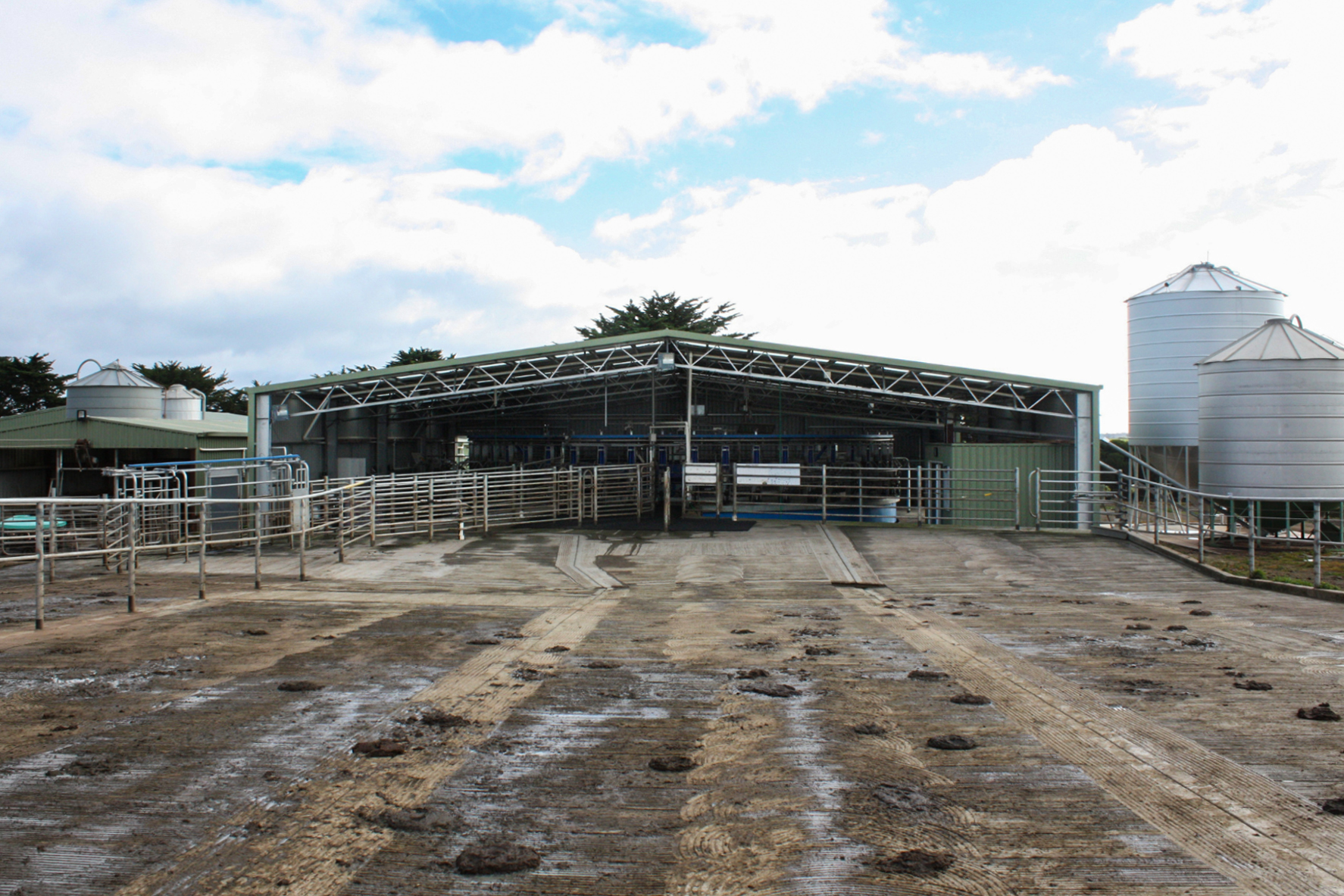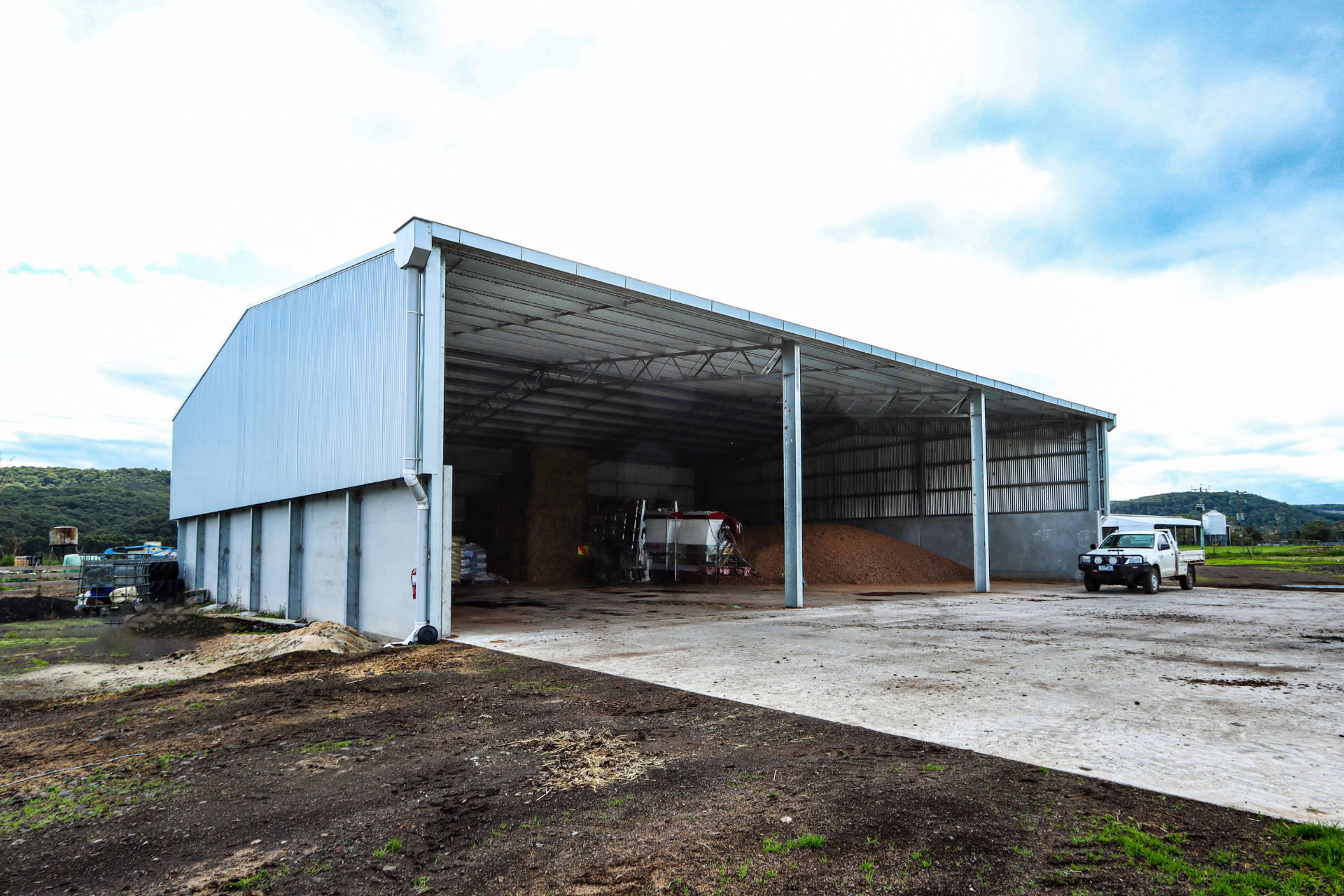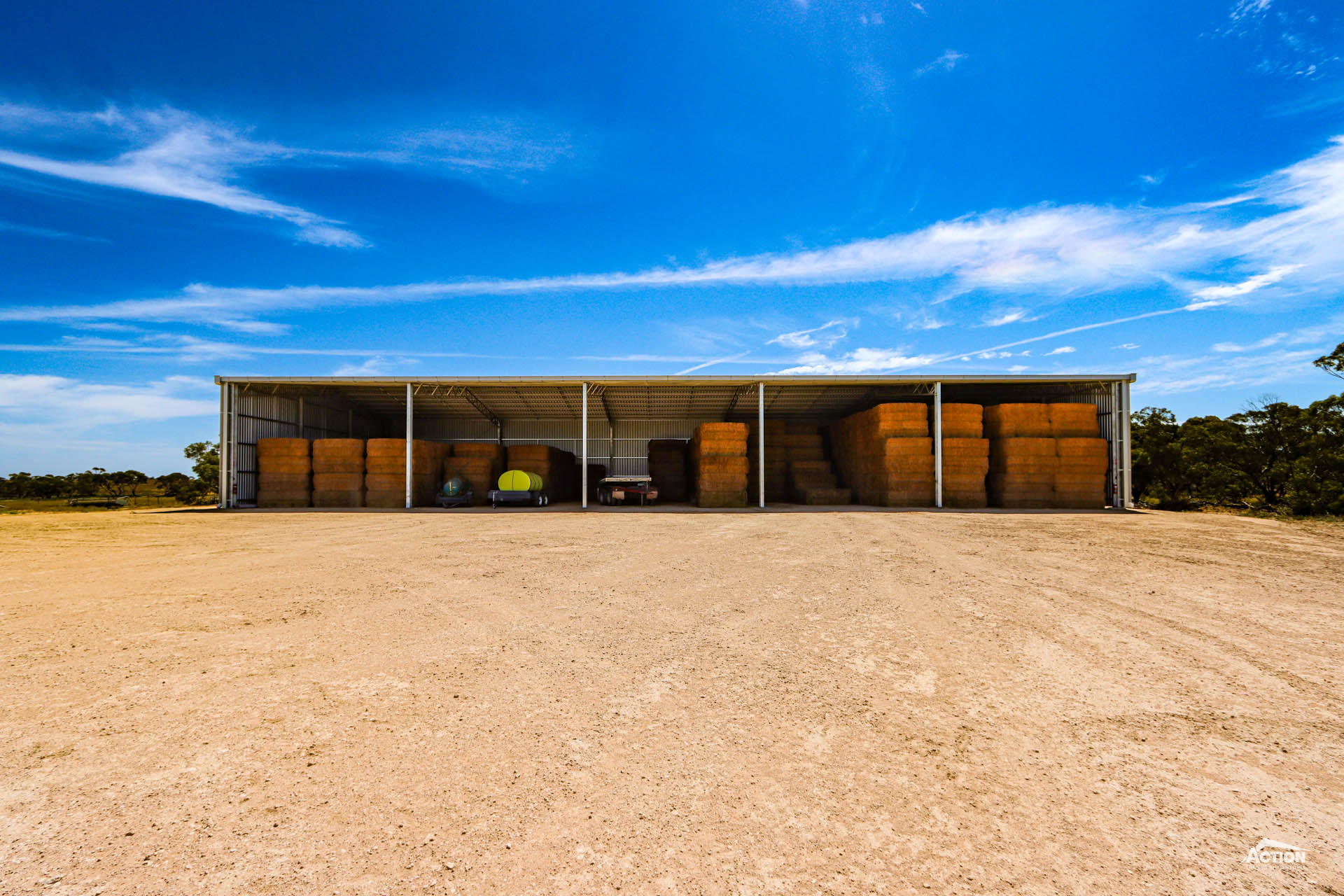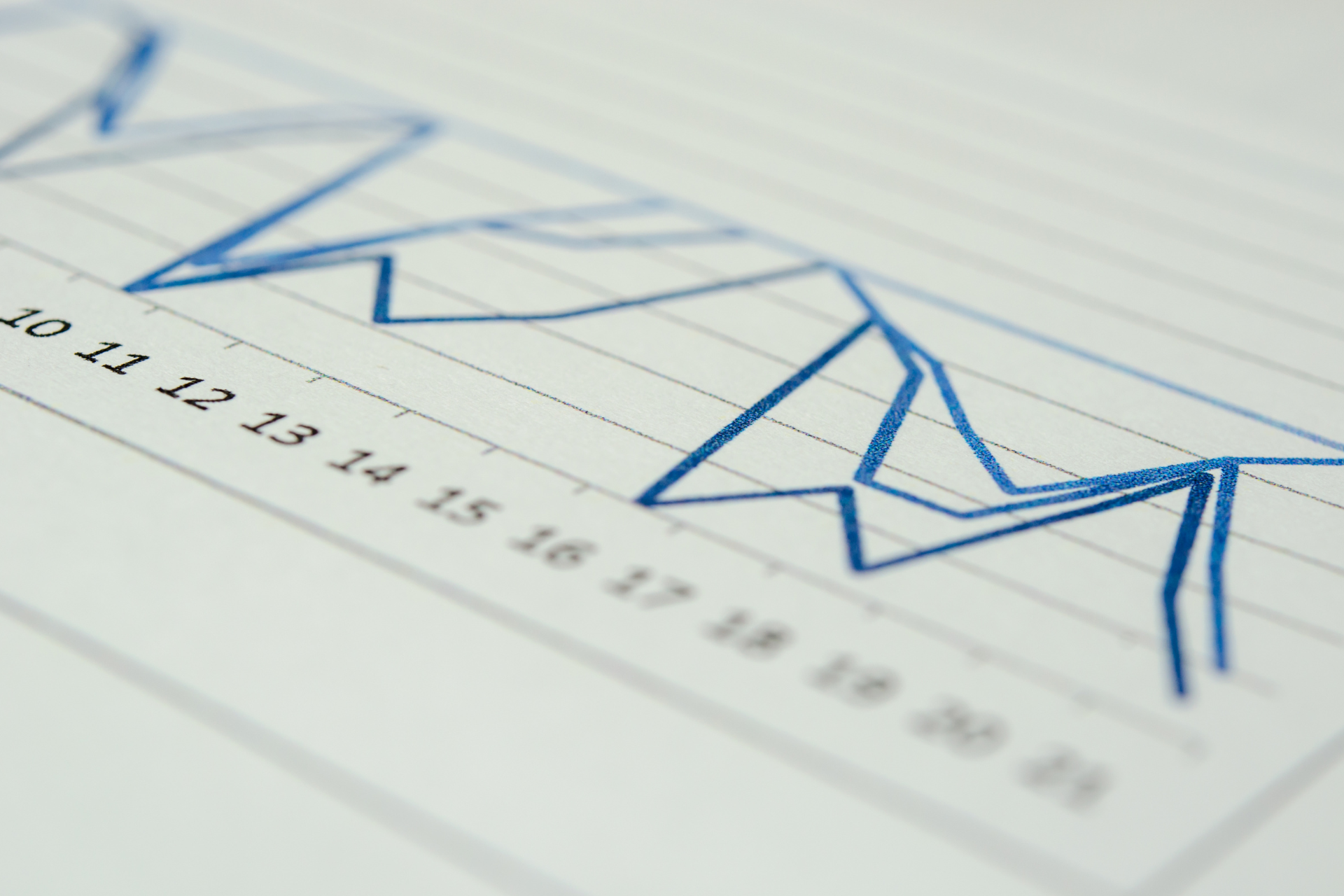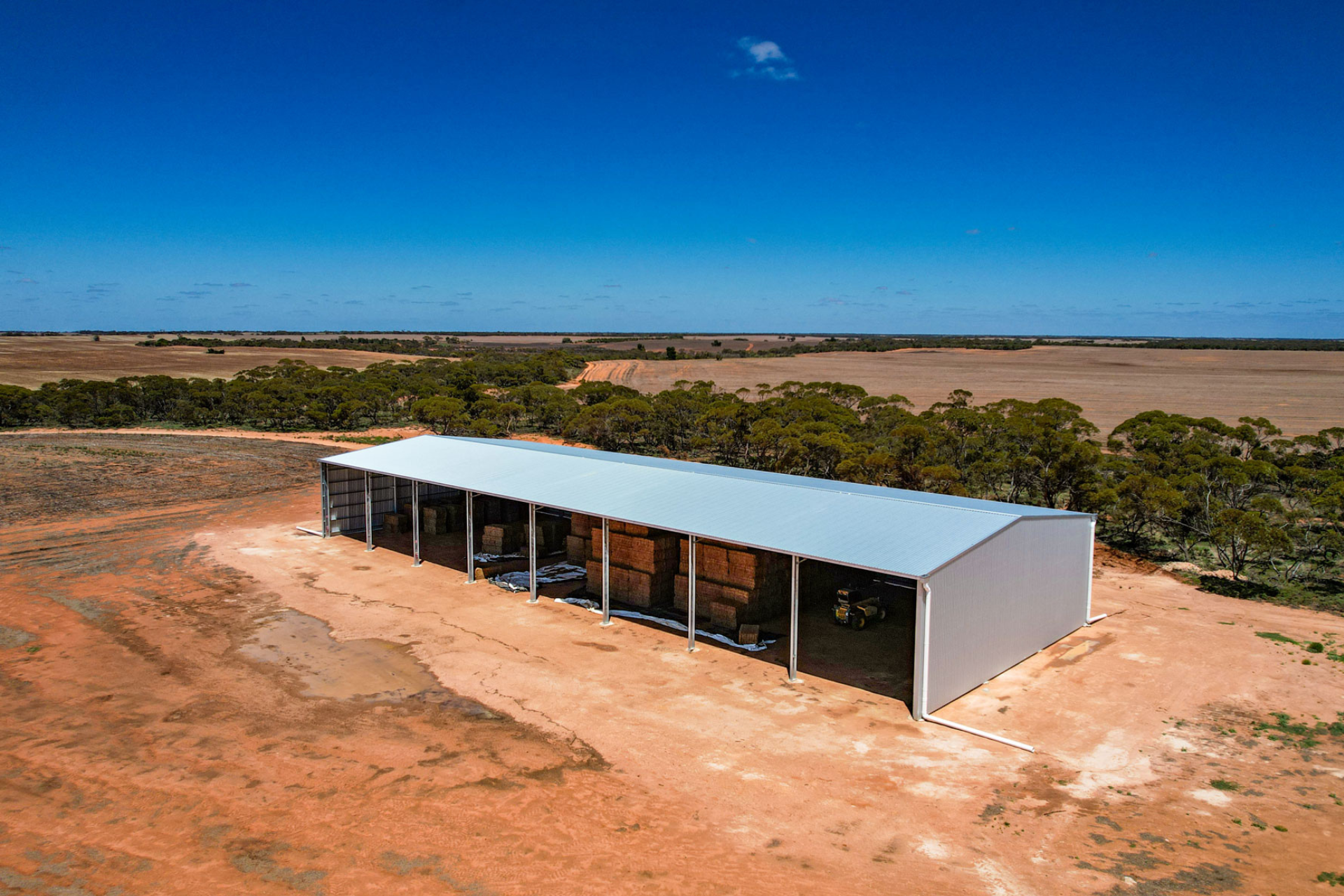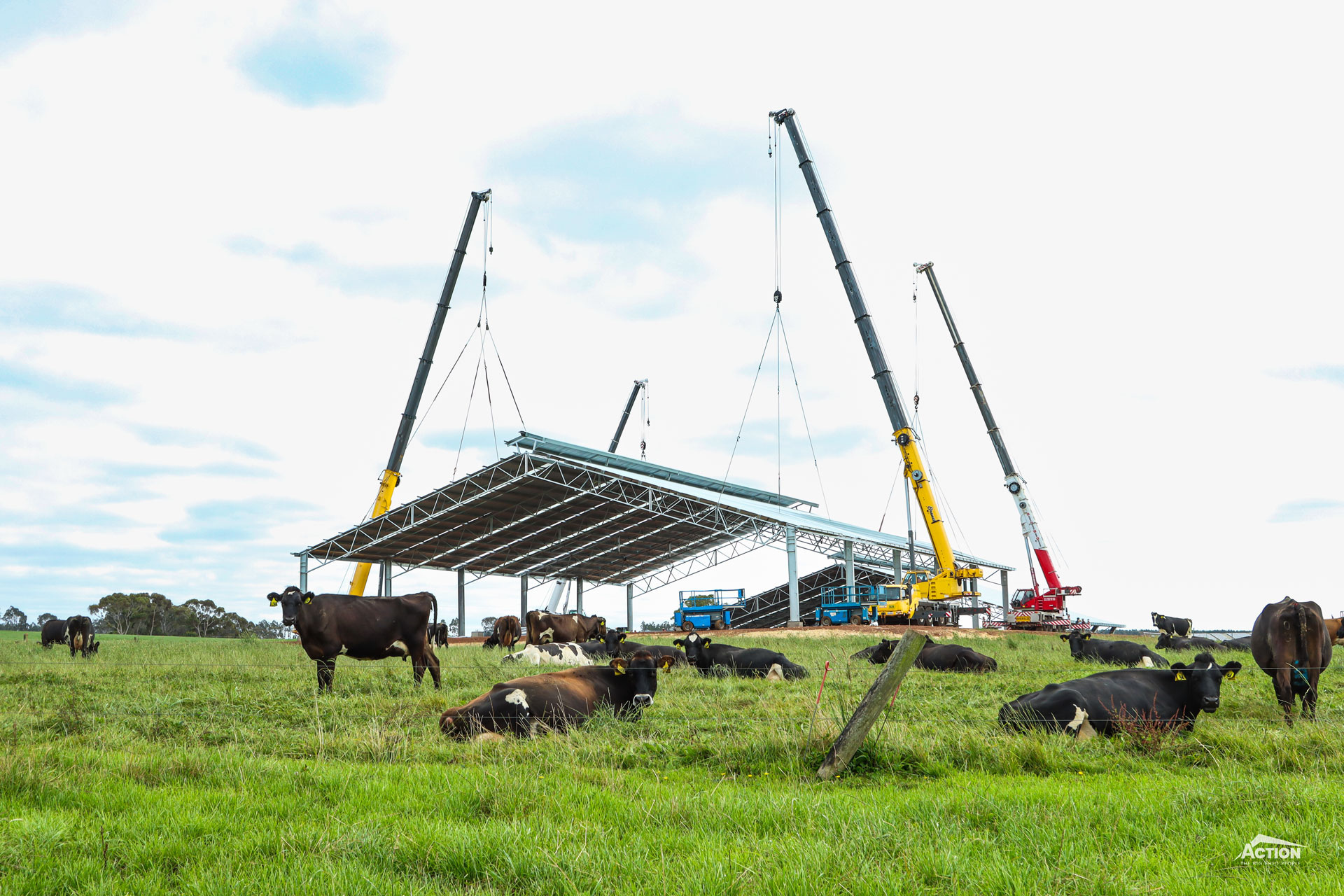Embarking on a new dairy project? Budgeting for the cost of a new dairy shed build?
When it comes to building a new dairy, there can be some significant costs involved. These include site preparation, the milking platform and equipment and the shed component.
And a new dairy is usually a once-in-a-lifetime project, therefore thorough planning is essential.
It is also a good idea to have a clear and accurate budget before committing to a new build.
So, where do you start?
How much does it cost to build a dairy shed?
In this article we discuss the cost to build a rotary dairy shed, to help you kick-start your budgeting.
We also discuss the main factors that influence dairy shed prices. And look at ways you could save money on your new dairy shed project.
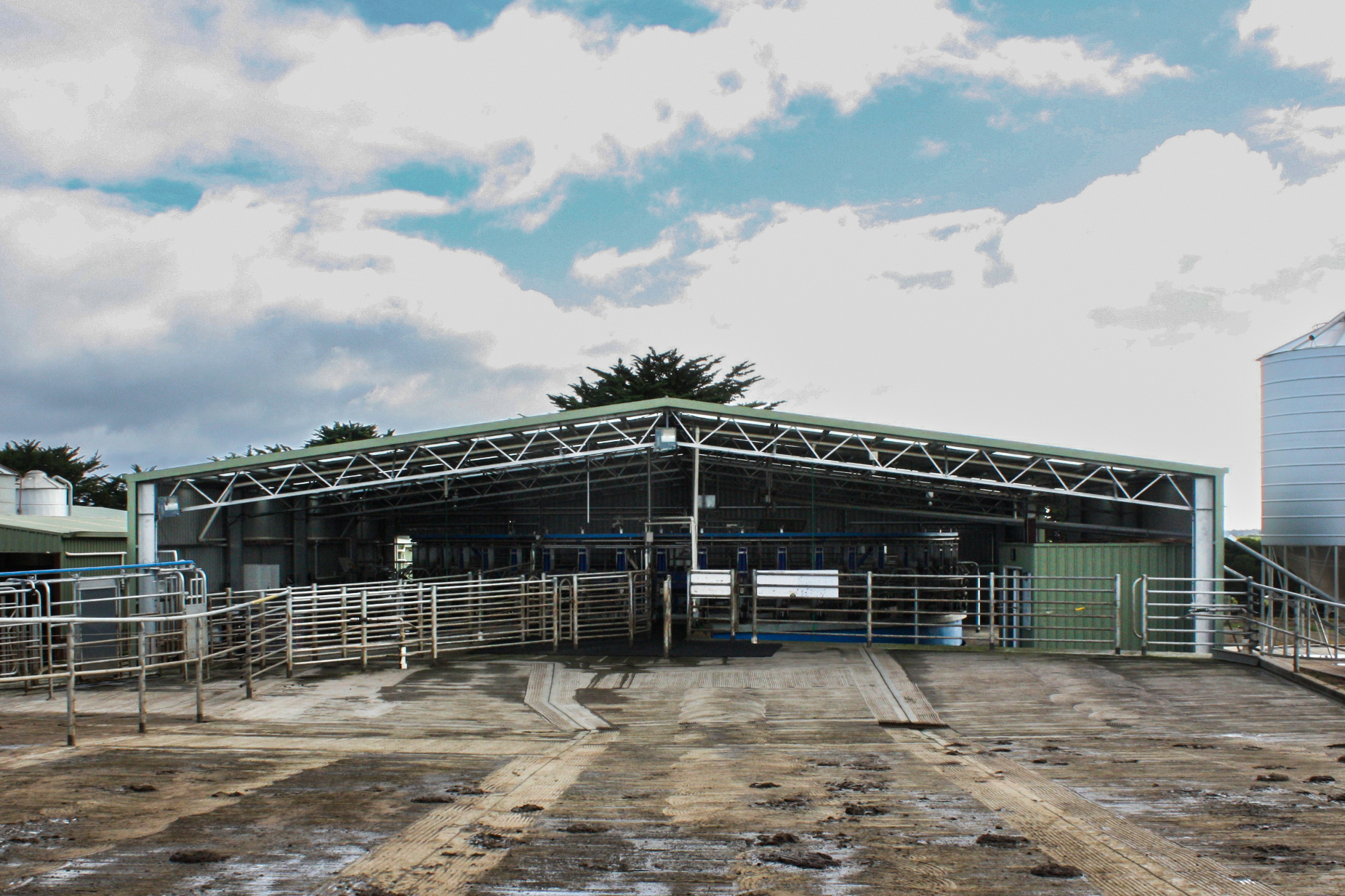
Read on to learn about 2022 dairy shed prices.
How Much Does It Cost To Build A Rotary Dairy Shed?
In 2022, the average cost of a new rotary dairy shed build is approx. $175,000 including GST, footing concrete and erection.
Please note: this price does not include the cost of the dairy platform. And it also covers a wide range of dairy shed sizes and different designs.
For a more accurate idea of the cost to build a rotary dairy shed, we’ve included a price list below for some popular dairy shed sizes.
This also shows how the price can vary from project to project.
Rotary Dairy Shed Prices
Here is a price guide for rotary dairy shed sizes that have been popular recently.
Prices include GST, footing concrete and erection, and are for the shed component only.
- A 27m x 18m x 4.5m rotary dairy shed costs approx. $75,000 – $100,000.
- A 24m x 21m x 4.5m rotary dairy shed costs approx. $125,000 – $155,000.
- A 31m x 24m x 4.5m rotary dairy shed costs approx. $175,000 – $210,000.
- A 36m x 27m x 4.5m rotary dairy shed costs approx. $190,000 – $230,000.
And if you would like a price for a new rotary dairy platform, we often work in with suppliers such as GreenCon. Or view more suggestions here.
We hope this rotary dairy shed price list is a useful budgeting tool for your project. If you would like more accurate pricing, request an obligation-free quote via our online form – or give us a call!
To help you understand dairy shed prices and why they can vary, next up we discuss the main factors that influence the cost to build a rotary dairy shed.
Factors That Influence The Price Of A Dairy Shed
Like many other shed projects, such as fertiliser sheds, there are four main factors that will influence how much you will pay for a new dairy shed build.
These factors include dairy shed design, size, materials and customisation.
1. Design
The dairy shed design and configuration is usually determined by the platform and layout you choose, and this will influence the price of your shed.
For example, the most common dairy shed design is a three-sided configuration with an open gable end. Sliding doors are installed on each enclosed side for access and to help control the airflow through the shed.
This is a cost-effective option, particularly if you choose a standard size span, but it is not necessarily the least expensive.
Instead, a configuration with partially clad walls will usually cost less. This is simply because there are fewer materials and less labour involved.
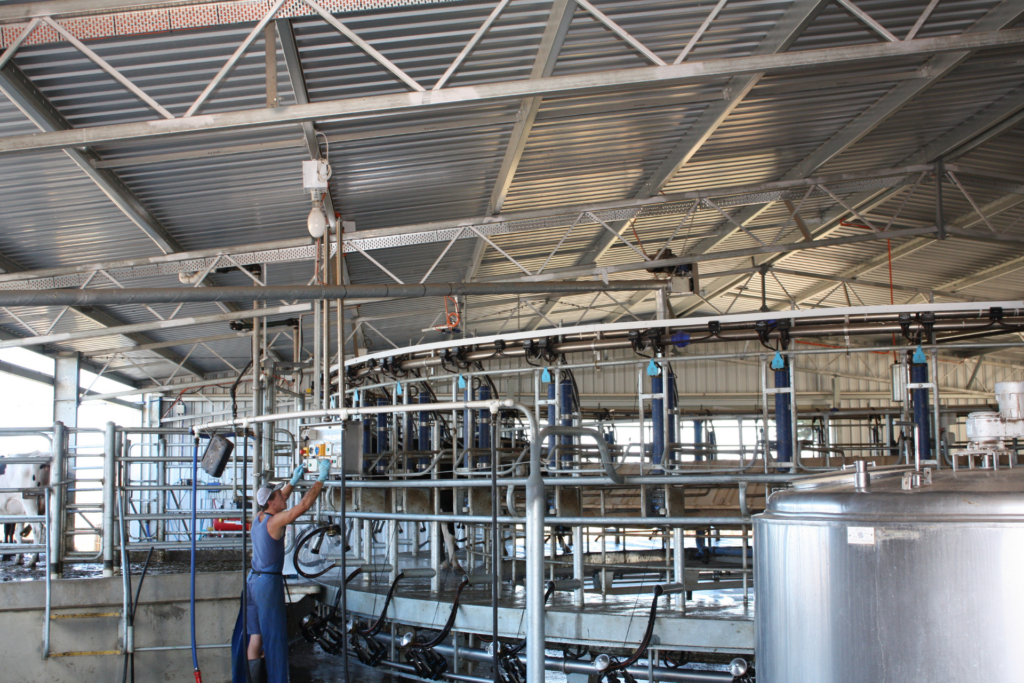
It is important to choose the design that will work best for you though.
2. Size
Like any other shed build, the size of a dairy shed directly impacts the cost.
The simple explanation for this is that the bigger the shed, the more materials and labour are required.
However, some shed sizes are more cost-effective than others. We’ll discuss this in more detail further on in the article – along with other ways to save money on your project.
3. Materials
You can’t build a dairy shed without materials! And materials are key contributors to the cost of your project.
There are several material costs to be aware of. These include structural steel, cladding and corrosion protection.
Here’s a quick overview of each of these:
- Structural Steel
Our sheds are manufactured from Australian-made steel including heavy-duty UB columns and open web trusses.
This means that any steel price increases or decreases will impact the cost to build a dairy shed.
Australian-made steel also typically costs more than imported steel.
You can learn about 2023 steel prices in this article – Are Steel Prices Decreasing?
- Cladding
There are three different options for your dairy shed cladding. These are galvanised cladding, zinc cladding and Colorbond cladding.
Zinc cladding is the least expensive option and is used for most farm shed builds. However, given that a dairy shed is a corrosive environment it may be worth paying extra for either galvanised cladding or Colorbond cladding.
- Corrosion Protection
Corrosion protection is essential for dairy sheds, and choosing the right cladding is not the only way you can keep your shed rust-free.
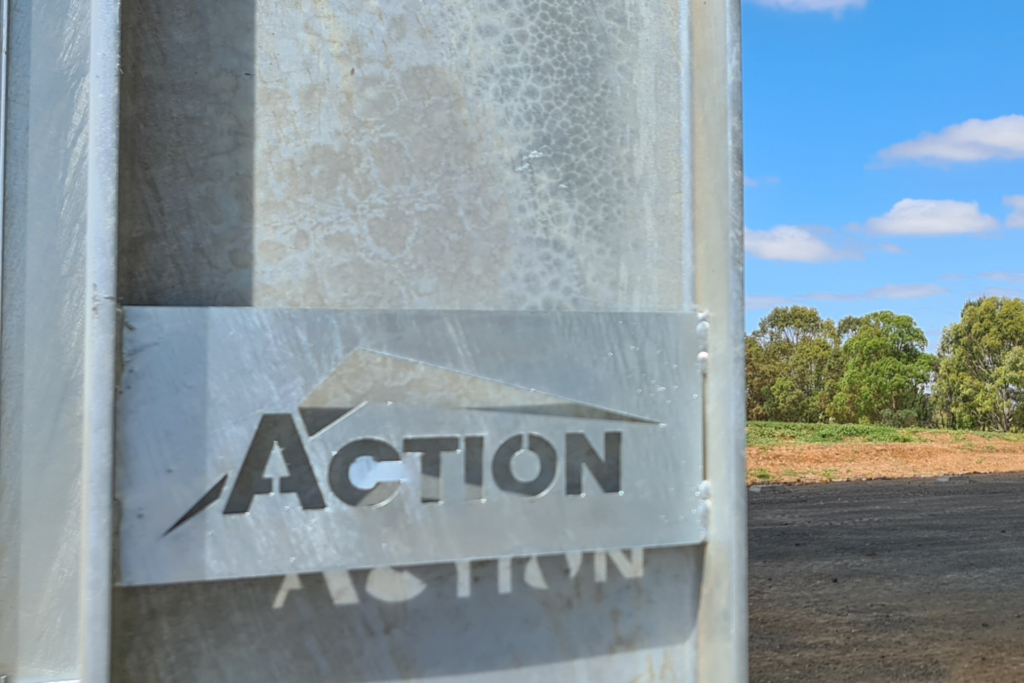
The most effective way to protect steel from rust is hot-dip galvanizing. This involves fully immersing the shed frame into a bath of molten zinc.
The downside to this is that hot dip galvanising usually has the highest initial cost compared to alternatives like paint or pre-galvanizing.
And, because our sheds are fully hot dip galvanized after manufacture, you can expect to pay more for an Action Steel dairy shed build than a shed with paint or pre-galv coating.
Having said that, hot dip galvanising has the lowest long-term cost. And we don’t recommend compromising on corrosion protection, especially for dairy sheds!
4. Customisation
As can be expected, the more custom design features you include in your dairy shed design, the more you will pay.
These design features could include sliding doors, canopies and ridge vents or even a custom roof pitch.
But remember, while these inclusions may cost more, they can increase the functionality, safety and longevity of your dairy shed. And these benefits will usually outweigh the cost.
If you are looking for ways to reduce the cost of your dairy shed project, there are several ways to do it.
Below we have listed some ways to save money on your project without impacting the quality of your shed or how the shed functions.
How Can I Save Money On My Dairy Shed?
If you are working to a strict budget for your project or if cash flow is limited, it makes sense to make sure you are getting the best value for money.
There are three areas you can potentially save money on your project. These are the shed design, the shed size and the shed builder.
Read on to learn more.
1. Shed Design
As we have already discussed, the most common design for a rotary dairy shed is a three-sided configuration with an open gable end and sliding doors.
This design can be tweaked though.
An option that has been popular recently is to clad the main shed area around the platform and leave the lead-up area open and unclad – or with partially enclosed walls and gable infills.
2. Standard Sizes
We briefly mentioned that some shed sizes are more cost-effective than others. This is because we work with a standard size span range.
Our standard span range has been designed specifically for farm sheds, so they are practical and functional.
And they help ensure your shed design is cost-effective. This is because a truss jig does not have to be set up specifically for your project, saving both time and money in the drafting and manufacturing stages.
So, where possible we would recommend choosing a standard span for your project. Popular sizes include 18 metres, 21 metres, 24 metres, 27 metres, 30 metres and 36 metres. You can learn more about these here – What Size Sheds Do You Build?
But we do understand that these sizes won’t work in every situation. For example, your shed may have to fit in with existing infrastructure. Or the size might be dictated by the internal layout.
3. Shed Builder
We would recommend building your shed with a company that can look after the complete project.
For example, here at Action Steel, we don’t just manufacture the steelwork for your dairy shed project.
Instead, we also apply for the required council permits, coordinate the erection stage and project manage your shed from initial sign-up to completion.
This could also involve arranging the concrete slab for your shed. Or manufacturing concrete panels.
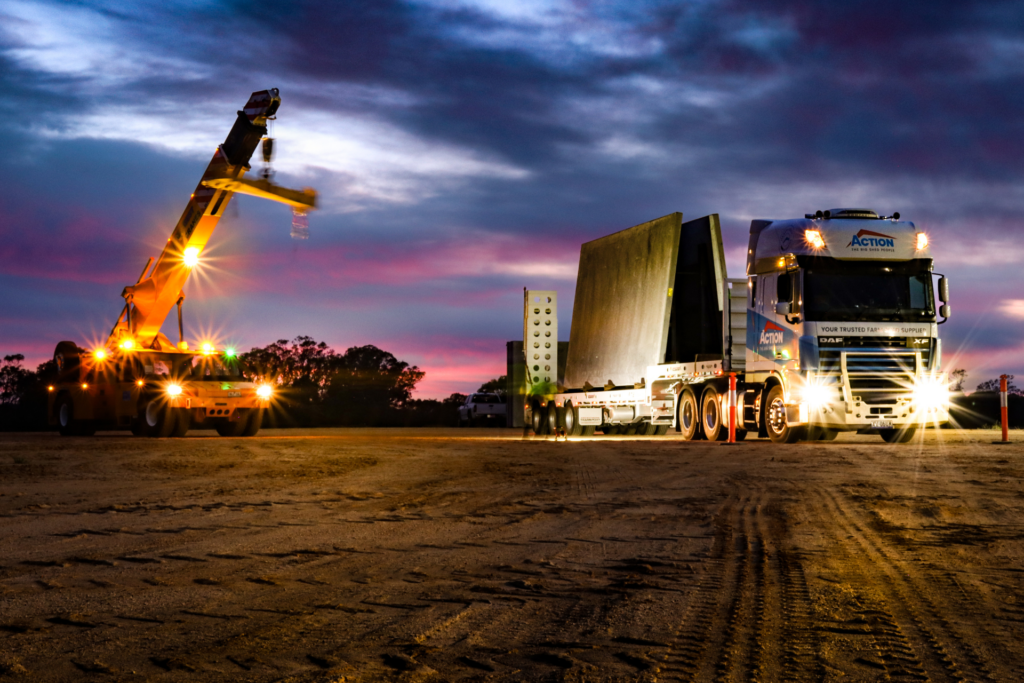
The concrete panel manufacturing can often be a significant cost saving. This is because other shed manufacturers will engage a third party to manufacture the panels and then add a margin to the price.
With Action Steel managing all of these steps, it means building a new dairy shed becomes a much less stressful and time-consuming experience for you. And time is money!
That’s a wrap on the three ways you could save money on your project.
Next up are other project costs your should be aware of.
What Other Dairy Shed Project Costs Do I Need To Be Aware Of?
The shed is just one component of a new rotary dairy build.
So, what other costs do you need to keep in mind when preparing a project budget?
Additional project costs that may not be included in your quote (it pays to check) include:
- Concreting, concrete panels and concrete slabs
- Permits and other required documentation and approval
- Rotary platform and equipment
- Site preparation and drainage
- Tanks and effluent management that meets EPA requirements
And read our article – 5 Hidden Costs Of Building A Farm Shed – to make sure you aren’t taken by surprise with any extra costs.
We hope you have found this article useful, and it has helped you with cost to build a rotary dairy shed!
For more articles like this one, browse our Learning Hub. And for project inspiration you can view our latest shed builds here.
Disclaimer: The prices included in this article are approximate only and are subject to change. They are intended only as a budgeting tool. For a more accurate costing, please request a formal quote.

